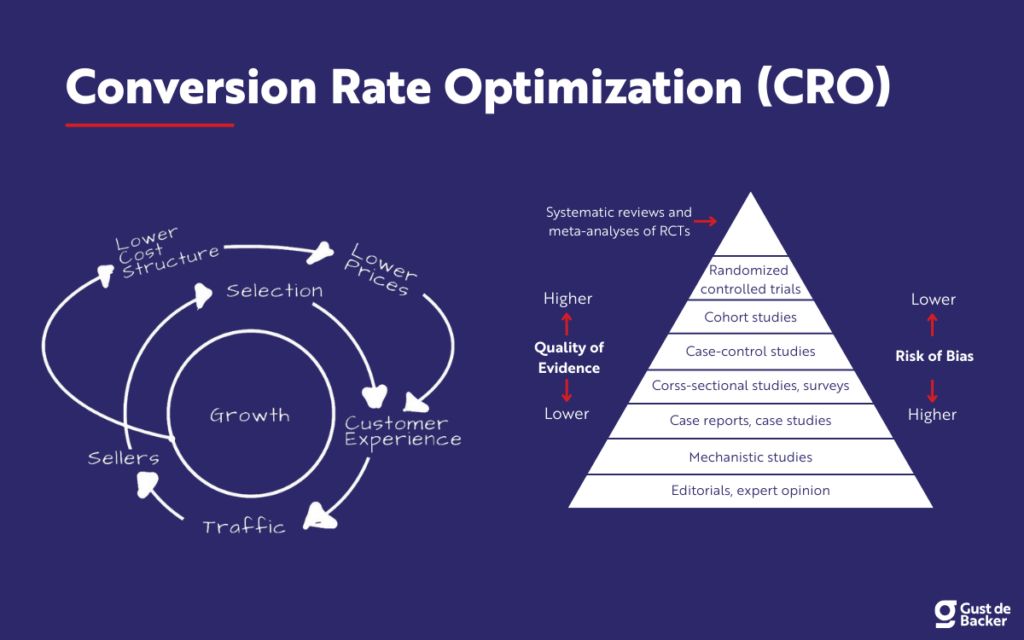Digital marketing strategies are essential for businesses to reach their target audience, increase brand awareness, and drive sales. In today’s digital age, having a robust online presence is crucial for success. This guide will explore the top digital marketing strategies that can help you achieve your business goals.

Understanding Your Audience
Before diving into specific strategies, it’s essential to understand your audience. Knowing who your target customers are, their preferences and their online behavior will help you tailor your marketing efforts effectively.
- Create Buyer Personas: Develop detailed profiles of your ideal customers, including demographics, interests, and pain points.
- Conduct Market Research: Use surveys, focus groups, and data analysis to gather insights about your audience.
- Analyze Competitors: Study your competitors’ strategies and identify gaps or opportunities in the market.

Search Engine Optimization (SEO)
SEO is the process of optimizing your website to rank higher in search engine results pages (SERPs). Higher rankings lead to increased organic traffic and visibility. Here are some key SEO strategies:
1. Keyword Research
Keyword research is the foundation of SEO. Identify the keywords and phrases your target audience uses to search for products or services similar to yours.
- Use Tools: Utilize keyword research tools like Google Keyword Planner, Ahrefs, and SEMrush to find relevant keywords.
- Long-Tail Keywords: Focus on long-tail keywords with lower competition but higher intent.
- Competitor Analysis: Analyze the keywords your competitors are ranking for and identify opportunities.
2. On-Page SEO
On-page SEO involves optimizing individual web pages to rank higher and earn more relevant traffic.
- Title Tags and Meta Descriptions: Write compelling title tags and meta descriptions that include target keywords.
- Headings: Use headings (H1, H2, H3) to structure your content and include keywords naturally.
- Content Quality: Create high-quality, informative, and engaging content that provides value to your audience.
- URL Structure: Use clear and descriptive URLs that include keywords.
- Internal Linking: Link to other relevant pages on your website to improve navigation and SEO.
3. Off-Page SEO
Off-page SEO focuses on activities outside your website that impact your rankings.
- Backlink Building: Acquire high-quality backlinks from reputable websites. Guest posting, influencer outreach, and content partnerships are effective strategies.
- Social Signals: Engage on social media to increase brand awareness and drive traffic to your website.
- Local SEO: Optimize your website for local searches by creating a Google My Business profile and getting local citations.
4. Technical SEO
Technical SEO involves optimizing your website’s technical aspects to improve its performance and crawlability.
- Site Speed: Ensure your website loads quickly by optimizing images, leveraging browser caching, and using a content delivery network (CDN).
- Mobile-Friendliness: Use responsive design to ensure your website looks and functions well on mobile devices.
- XML Sitemap: Create and submit an XML sitemap to search engines to help them index your pages.
- Structured Data: Use schema markup to provide search engines with additional information about your content.
Content Marketing
Content marketing involves creating and distributing valuable, relevant, and consistent content to attract and engage your audience. Here are some effective content marketing strategies:
1. Blogging
Blogging is a powerful way to attract organic traffic, establish authority, and engage your audience.
- Identify Topics: Use keyword research and audience insights to identify relevant topics.
- Create Quality Content: Write informative, well-researched, and engaging blog posts.
- Optimize for SEO: Use keywords naturally, include internal and external links, and use compelling headings and images.
- Promote Your Blog: Share your blog posts on social media, email newsletters, and other platforms.
2. Video Marketing
Video content is highly engaging and can significantly boost your marketing efforts.
- Create Valuable Content: Produce videos that educate, entertain, or solve problems for your audience.
- Optimize for SEO: Use relevant keywords in your video titles, descriptions, and tags.
- Share on Multiple Platforms: Upload videos to YouTube, social media, and your website.
- Engage with Your Audience: Respond to comments and encourage viewers to share your videos.
3. Infographics
Infographics are visual representations of information that can make complex topics more understandable and shareable.
- Design Attractive Infographics: Use design tools like Canva or hire a graphic designer.
- Share on Social Media: Infographics are highly shareable on platforms like Pinterest and Instagram.
- Include Relevant Data: Use accurate and up-to-date data to make your infographics informative and credible.
4. E-books and Whitepapers
E-books and whitepapers are in-depth content pieces that can establish your authority and generate leads.
- Create Valuable Resources: Write e-books and whitepapers that provide detailed information on relevant topics.
- Use Gated Content: Offer these resources in exchange for contact information to generate leads.
- Promote on Various Channels: Share your e-books and whitepapers through email marketing, social media, and your website.

Social Media Marketing
Social media marketing involves using social media platforms to promote your brand, engage with your audience, and drive traffic to your website. Here are some effective strategies:
1. Choose the Right Platforms
Focus on the social media platforms that are most relevant to your audience and business.
- Facebook: Ideal for community building and targeted advertising.
- Instagram: Great for visual content and influencer marketing.
- Twitter: Perfect for real-time updates and customer interaction.
- LinkedIn: Best for B2B marketing and professional networking.
- Pinterest: Useful for visual content and driving traffic through pins.
2. Create Engaging Content
Produce content that resonates with your audience and encourages engagement.
- Visual Content: Use high-quality images, videos, and graphics.
- Interactive Content: Create polls, quizzes, and live videos to engage your audience.
- User-Generated Content: Encourage your audience to create and share content related to your brand.
3. Use Hashtags
Hashtags can increase the visibility of your posts and help you reach a wider audience.
- Relevant Hashtags: Use hashtags that are relevant to your content and audience.
- Trending Hashtags: Participate in trending conversations by using popular hashtags.
- Branded Hashtags: Create and promote your own branded hashtags to build community and brand recognition.
4. Engage with Your Audience
Building relationships with your audience is crucial for social media success.
- Respond to Comments: Reply to comments and messages promptly.
- Host Giveaways and Contests: Run giveaways and contests to encourage engagement and reward your followers.
- Collaborate with Influencers: Partner with influencers to reach a broader audience and build credibility.

Pay-Per-Click (PPC) Advertising
PPC advertising involves paying for each click on your ads. It’s a cost-effective way to drive targeted traffic to your website. Here are some effective PPC strategies:
1. Google Ads
Google Ads is one of the most popular PPC platforms, allowing you to reach users searching for specific keywords.
- Keyword Research: Use keyword research tools to find relevant keywords with high search volume and low competition.
- Create Compelling Ads: Write clear and compelling ad copy that includes your target keywords.
- Optimize Landing Pages: Ensure your landing pages are optimized for conversions with clear calls-to-action and relevant content.
- Monitor and Adjust: Continuously monitor your ad performance and adjust your bids, keywords, and ad copy as needed.
2. Social Media Ads
Social media platforms like Facebook, Instagram, and LinkedIn offer robust advertising options.
- Targeting Options: Use detailed targeting options to reach your ideal audience based on demographics, interests, and behavior.
- Ad Formats: Experiment with different ad formats, including image ads, video ads, carousel ads, and sponsored posts.
- A/B Testing: Run A/B tests to compare different ad creatives, headlines, and targeting options to find the most effective combinations.
Email Marketing
Email marketing involves sending targeted messages to your audience to nurture relationships and drive conversions. Here are some effective email marketing strategies:
1. Build an Email List
A high-quality email list is the foundation of successful email marketing.
- Lead Magnets: Offer valuable resources like e-books, checklists, or webinars in exchange for email addresses.
- Sign-Up Forms: Place sign-up forms on your website, blog, and social media profiles.
- Segmentation: Segment your email list based on demographics, behavior, and interests to send more personalized messages.
2. Create Engaging Emails
Craft emails that provide value and encourage engagement.
- Compelling Subject Lines: Write attention-grabbing subject lines to increase open rates.
- Personalization: Use personalization techniques like addressing subscribers by name and tailoring content to their preferences.
- Clear Calls-to-Action: Include clear and compelling calls-to-action to encourage clicks and conversions.
3. Automate Email Campaigns
Automation can save time and improve the effectiveness of your email marketing efforts.
- Welcome Series: Create an automated welcome series to introduce new subscribers to your brand and nurture them.
- Drip Campaigns: Set up drip campaigns to deliver a series of emails over time based on subscriber behavior.
- Abandoned Cart Emails: Send automated emails to remind customers about items left in their shopping carts.
4. Analyze and Optimize
Use analytics to track the performance of your email campaigns and make data-driven improvements.
- Open and Click-Through Rates: Monitor open and click-through rates to gauge the effectiveness of your subject lines and content.
- Conversion Rates: Track the conversion rates of your emails to measure their impact on sales and leads.
- A/B Testing: Test different elements of your emails, such as subject lines, content, and calls-to-action, to optimize performance.
Affiliate Marketing
Affiliate marketing involves partnering with affiliates who promote your products or services in exchange for a commission. Here are some effective affiliate marketing strategies:
1. Find the Right Affiliates
Identify affiliates who align with your brand and have a relevant audience.
- Affiliate Networks: Join affiliate networks like ShareASale, CJ Affiliate, or Rakuten to find potential affiliates.
- Influencer Partnerships: Collaborate with influencers who can promote your products to their followers.
- Content Creators: Partner with bloggers, YouTubers, and podcasters who create content related to your niche.
2. Provide Valuable Resources
Equip your affiliates with the tools and resources they need to promote your products effectively.
- Promotional Materials: Provide high-quality banners, images, and copy for your affiliates to use.
- Training and Support: Offer training and support to help your affiliates understand your products and marketing strategies.
- Performance Tracking: Use affiliate tracking software to monitor performance and provide real-time data to your affiliates.
3. Offer Competitive Commissions
Attract and retain top-performing affiliates by offering competitive commissions.
- Tiered Commission Structure: Implement a tiered commission structure that rewards affiliates for higher sales volumes.
- Bonuses and Incentives: Offer bonuses and incentives for top-performing affiliates to motivate them.
4. Monitor and Optimize
Regularly review your affiliate program’s performance and make improvements.
- Performance Metrics: Track key metrics like click-through rates, conversion rates, and sales to evaluate the success of your affiliate program.
- Affiliate Feedback: Collect feedback from your affiliates to identify areas for improvement and address any issues.
- Program Adjustments: Make adjustments to your commission structure, promotional materials, and support based on performance data and feedback.
Influencer Marketing
Influencer marketing involves partnering with influencers who have a significant following to promote your brand. Here are some effective influencer marketing strategies:

1. Identify the Right Influencers
Choose influencers who align with your brand and have an engaged audience.
- Niche Relevance: Select influencers who create content related to your industry or niche.
- Audience Engagement: Look for influencers with high engagement rates, not just a large follower count.
- Authenticity: Choose influencers who genuinely resonate with their audience and have built trust.
2. Develop Authentic Partnerships
Build authentic relationships with influencers to ensure effective collaborations.
- Personalized Outreach: Reach out to influencers with personalized messages that highlight why you want to work with them.
- Clear Communication: Communicate your goals, expectations, and guidelines for the partnership.
- Creative Freedom: Allow influencers creative freedom to promote your products in a way that aligns with their style and audience.
3. Create Compelling Campaigns
Design campaigns that are engaging and resonate with the influencer’s audience.
- Product Reviews: Have influencers review your products and share their honest opinions.
- Sponsored Content: Collaborate on sponsored posts, videos, or stories that highlight your brand.
- Giveaways and Contests: Run giveaways and contests in partnership with influencers to increase engagement and reach.
4. Measure and Analyze
Track the performance of your influencer marketing campaigns to assess their impact.
- Engagement Metrics: Monitor likes, comments, shares, and views to evaluate audience engagement.
- Traffic and Conversions: Use tracking links and promo codes to measure the traffic and conversions generated by the campaign.
- Return on Investment (ROI): Calculate the ROI of your influencer partnerships to determine their effectiveness and make data-driven decisions.
Conversion Rate Optimization (CRO)
CRO involves optimizing your website and marketing efforts to increase the percentage of visitors who take the desired action, such as making a purchase or signing up for a newsletter. Here are some effective CRO strategies:

1. Analyze User Behavior
Understand how users interact with your website to identify areas for improvement.
- Heatmaps: Use heatmap tools to visualize where users click, scroll, and spend the most time on your site.
- Session Recordings: Analyze session recordings to see how users navigate your website and where they encounter issues.
- User Surveys: Conduct surveys to gather feedback on user experience and identify pain points.
2. Improve Website Design
Enhance your website design to provide a better user experience and increase conversions.
- Simplify Navigation: Ensure your website is easy to navigate with clear menus and intuitive layout.
- Optimize for Mobile: Make sure your website is mobile-friendly and provides a seamless experience on all devices.
- Fast Loading Times: Improve page load times by optimizing images, using a content delivery network (CDN), and minimizing code.
3. Optimize Landing Pages
Create high-converting landing pages that encourage visitors to take action.
- Compelling Headlines: Write clear and compelling headlines that grab attention and convey the value proposition.
- Persuasive Copy: Use persuasive and benefit-driven copy to highlight the advantages of your product or service.
- Clear CTAs: Include clear and prominent calls to action that guide visitors toward the desired action.
- A/B Testing: Run A/B tests to compare different versions of your landing pages and identify the most effective elements.
4. Leverage Social Proof
Use social proof to build trust and credibility with your audience.
- Customer Testimonials: Display testimonials from satisfied customers to showcase positive experiences.
- Case Studies: Share detailed case studies that highlight the success of your product or service.
- User Reviews: Encourage customers to leave reviews and display them prominently on your website.
Conclusion
Implementing these top digital marketing strategies can significantly enhance your online presence, attract and engage your target audience, and drive business growth. By understanding your audience, optimizing for search engines, creating valuable content, leveraging social media, utilizing PPC advertising, and focusing on email, affiliate, influencer marketing, and CRO, you can develop a comprehensive and effective digital marketing strategy that achieves your business goals. Stay updated with the latest trends and continuously analyze and optimize your efforts to stay ahead in the dynamic digital landscape.




Thanks for ideas .